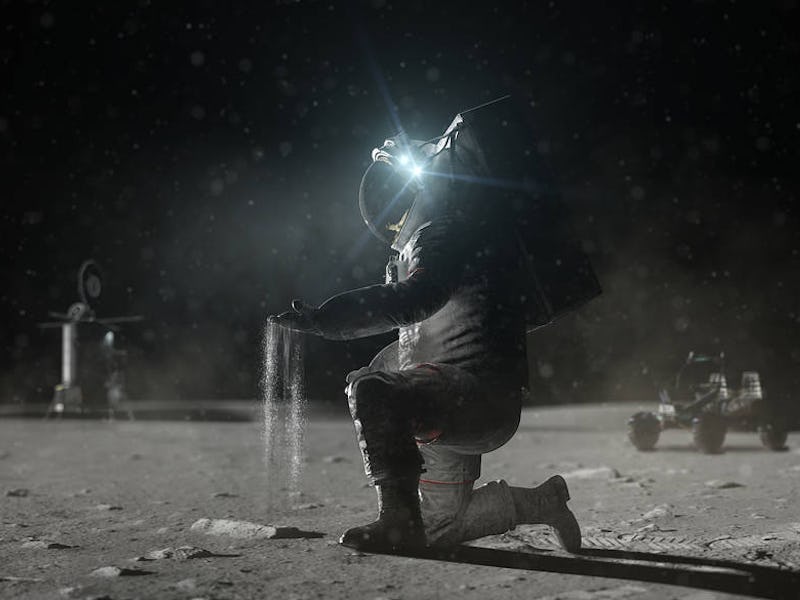Behold! NASA teases how astronauts will explore Moon’s darkest regions
Are you afraid of the dark?

There is something singularly creepy about moments when the lights go out. But while power cuts on Earth might plunge us into sudden darkness, they are rarely a reason to be scared — and yet, many of us are afraid of the dark.
Hopefully, none of the astronauts vying to join the Artemis crewed Moon missions are similarly nyctophobic. If a new NASA image is anything to go on, they’ll need to get over it.
“NASA astronauts are no strangers to extreme environments,” Megan Dean, a NASA spokesperson tells Inverse. Just as well. In a hauntingly beautiful photograph posted on Twitter this week, NASA teases just how extreme the environment may be when NASA astronauts reach the Moon as part of the Artemis III mission, currently slated for 2025.
Artemis III will be the first crewed Moon landing as part of the NASA program to return humans to the Moon. It will be the first such mission since 1972, when Apollo 17 landed astronauts on the Moon for the last time. Artemis III is geared to land in the Moon’s south pole region — an unexplored zone some of which lies in permanent shadow (although other areas are rather bright).
“We will best prepare our astronauts by exposing them to training environments here on Earth that simulate a sixth of the gravity, suit mobility, lighting, and lunar terrain they expect to see on the mission,” Dean says. The crew will likely be composed of four, as-yet-unknown NASA astronauts — only two will actually spend time on the lunar surface.
Quite the practice environment.
The ethereal ‘scape shown here is supposed to help replicate the lunar south pole’s dark skies. But although much of the region is in shadow, the astronauts will have some artificial light source, Dean says. As of now, however, it’s still pretty minimal.
“The astronauts will have helmet lights at a minimum,” she says, “and we are investigating auxiliary lights that could be carried on their suits and deployed at worksites.”
NASA has promised it will land the first woman and the first person of color on the Moon as part of Artemis. The plan is for the Artemis III crew to remain on the Moon for a week.
The Artemis III mission will be timed in such a way that it will never be truly pitch black, however.
“The Artemis 3 mission will be launched at a time when the landing site is illuminated enough by the low angled Sun to enable a safe landing,” Dean says.
“In addition, the traverse paths used during the moonwalks plan to follow terrain that is most easily navigated and within the spacesuits mobility capabilities using light provided by the low angled Sun. Although Permanently Shaded Regions (PSR) are an area of scientific interest at the South Pole region, we will likely not venture into a PSR on the first mission.”
In this multi-temporal illumination map of the lunar south pole, Shackleton crater (19 km diameter) is in the center, the south pole is located approximately at 9 o'clock on its rim.
“Practice makes perfect.”
The Permanently Shadowed Regions referred to here are of significant interest because they may harbor water ice, a resource critical to establishing a long-term human presence on the Moon. This is the ultimate goal of the Artemis missions — to pave the way to a continuously crewed habitat on the surface of the Moon that could provide a base for future science missions for decades to come.
Before Artemis III can come to fruition, Artemis I and Artemis II also need to succeed. Artemis I is currently slated to launch no earlier than March 20, 2022, but it has been subject to delays. Artemis II is currently predicted to launch at some point in 2024, but that may also change. There is plenty of time for delays to the mission schedules and they could have a knock-on effect on the timing for Artemis III.
On the plus side, this gives plenty of time for NASA astronauts on Earth to get fully accustomed to the idea of working in such an extreme and dark environment.
“Practice makes perfect,” Dean says.
This article was originally published on